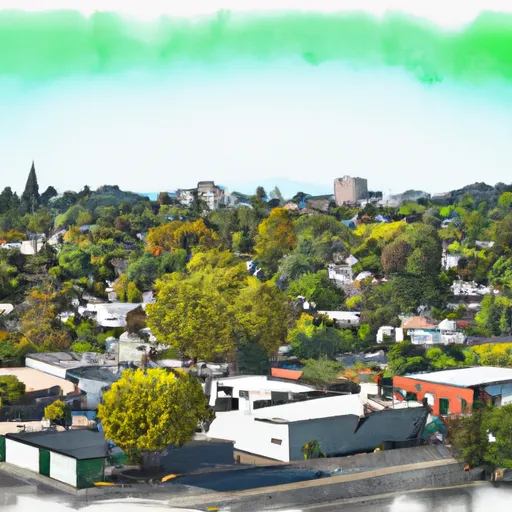-
 Snoflo Premium
Snoflo Premium
Get unlimited access to all our content
With no Ad interruptions! - Start Your Free Trial Login with existing account
Greenwood
Eden Index
Climate
9.7
•
Recreation
6.6
•
Community
•
Safeguard
6.2/10

Greenwood, California is a small, unincorporated community located in the Sierra Nevada foothills. The climate in Greenwood is Mediterranean, with hot, dry summers and mild, wet winters. The area is known for its rich hydrology, with numerous streams and rivers, including the Middle Fork of the Yuba River, flowing through the region. The hydrology constituents of this area include sediment, nutrients, and dissolved organic matter. Outdoor recreation opportunities in Greenwood are plentiful, including hiking, fishing, camping, and kayaking. The community is surrounded by expansive forests and natural beauty, making it an ideal destination for those seeking a peaceful escape into nature.
What is the Eden Index?
The Snoflo Eden Index serves as a comprehensive rating system for regions, evaluating their desirability through a holistic assessment of climate health, outdoor recreation opportunities, and natural disaster risk, acknowledging the profound impact of these factors on livability and well-being.
Climate Health Indicator (CHI): 9.7
Greenwood receives approximately
1072mm of rain per year,
with humidity levels near 78%
and air temperatures averaging around
15°C.
Greenwood has a plant hardyness factor of
9, meaning
plants and agriculture in this region tend to thrive here all year round.
By considering the ideal temperature range, reliable water supplies, clean air, and stable seasonal rain or snowpacks, the Climate Health Indicator (CHI) underscores the significance of a healthy climate as the foundation for quality living.
A healthy climate is paramount for ensuring a high quality of life and livability in a region, fostering both physical well-being and environmental harmony. This can be characterized by ideal temperatures, reliable access to water supplies, clean air, and consistent seasonal rain or snowpacks.
Weather Forecast
Streamflow Conditions
Lower Sacramento
Area Rivers
Lower Sacramento
Snowpack Depths
Lower Sacramento
Reservoir Storage Capacity
Lower Sacramento
Groundwater Levels
Recreational Opportunity Index (ROI): 6.6
The Recreational Opportunity Index (ROI) recognizes the value of outdoor recreational options, such as parks, hiking trails, camping sites, and fishing spots, while acknowledging that climate plays a pivotal role in ensuring the comfort and consistency of these experiences.
Access to outdoor recreational opportunities, encompassing activities such as parks, hiking, camping, and fishing, is crucial for overall well-being, and the climate plays a pivotal role in enabling and enhancing these experiences, ensuring that individuals can engage in nature-based activities comfortably and consistently.
Camping Areas
| Campground | Campsites | Reservations | Toilets | Showers | Elevation |
|---|---|---|---|---|---|
| Shirttail | 30 | 3,943 ft | |||
| Mineral Bar - Auburn State Rec Area | 18 | 1,167 ft | |||
| Dru Barner | 47 | 3,237 ft | |||
| Rucky A Chucky - Auburn State Rec Area | 5 | 723 ft | |||
| Finnon Lake | 14 | 2,427 ft | |||
| Giant Gap | 35 | 3,686 ft | |||
| Big Reservoir | 19 | 4,161 ft | |||
| Peninsula - Folsom Lake State Rec Area | 100 | 792 ft | |||
| Nevada County Fairgrounds | None | 2,455 ft | |||
| Bear River County Park | 23 | 1,749 ft |
Nearby Ski Areas
Catastrophe Safeguard Index (CSI):
The Catastrophe Safeguard Index (CSI) recognizes that natural disaster risk, encompassing floods, fires, hurricanes, and tornadoes, can drastically affect safety and the overall appeal of an area.
The level of natural disaster risk in a region significantly affects safety and the overall livability, with climate change amplifying these risks by potentially increasing the frequency and intensity of events like floods, fires, hurricanes, and tornadoes, thereby posing substantial challenges to community resilience and well-being.
Community Resilience Indicator (CRI):
The Community Resilience Indicator (CRI) recognizes that education, healthcare, and socioeconomics are crucial to the well-being of a region. The CRI acknowledges the profound impact of these elements on residents' overall quality of life. By evaluating educational resources, healthcare accessibility, and economic inclusivity, the index captures the essential aspects that contribute to a thriving community, fostering resident satisfaction, equity, and social cohesion.

